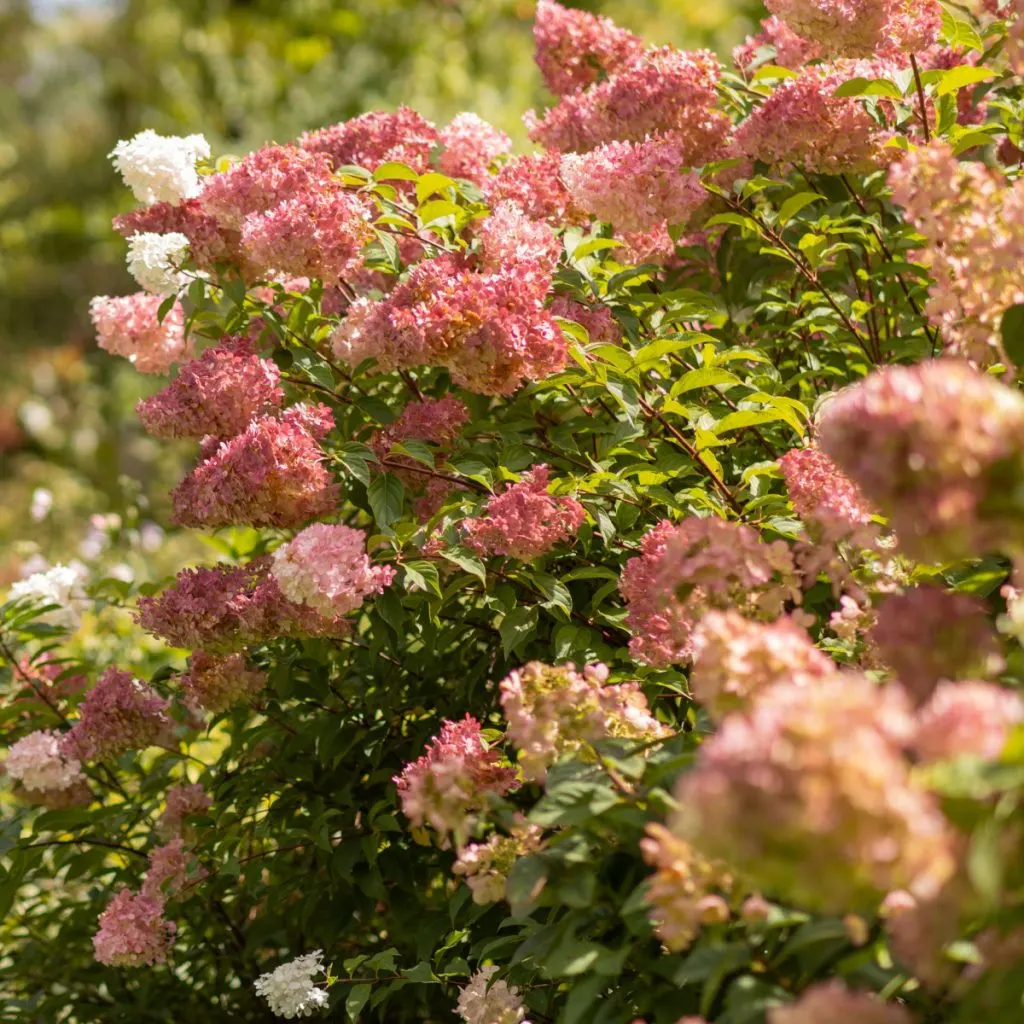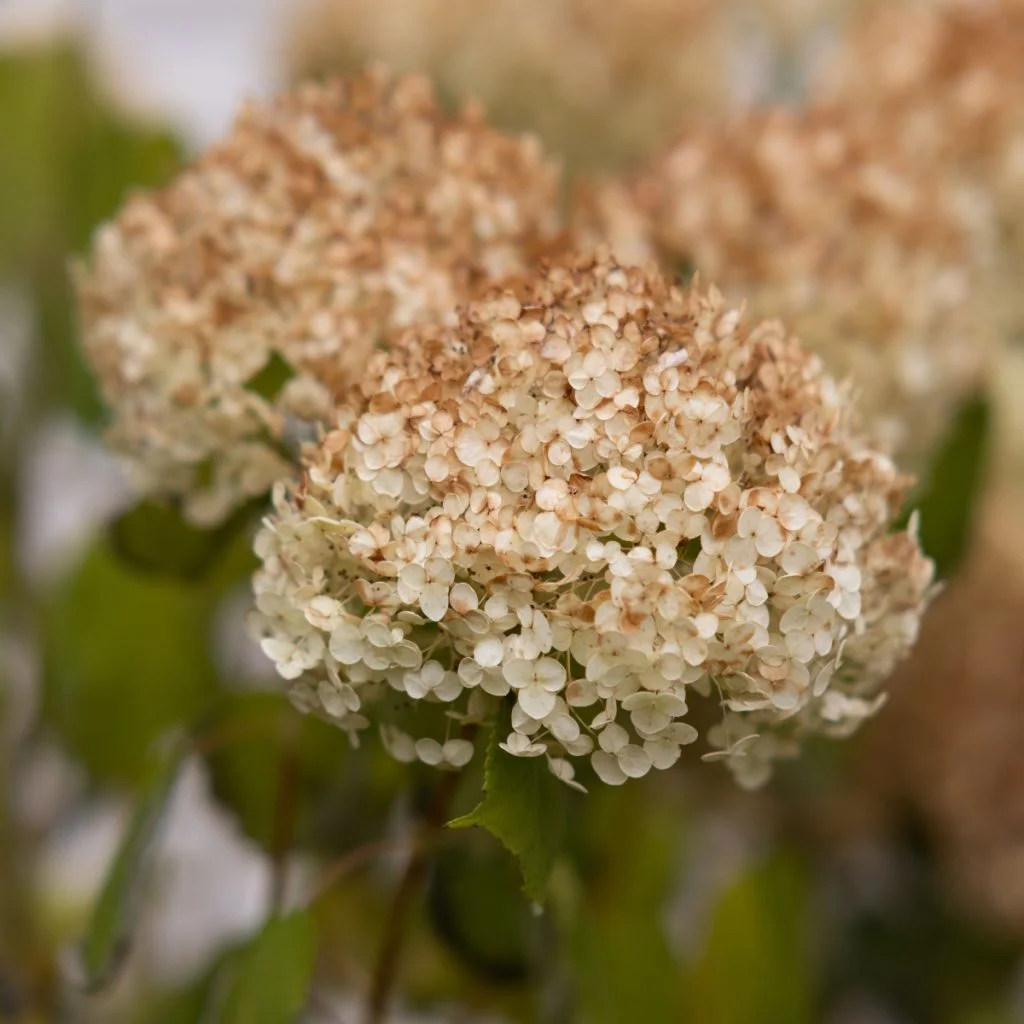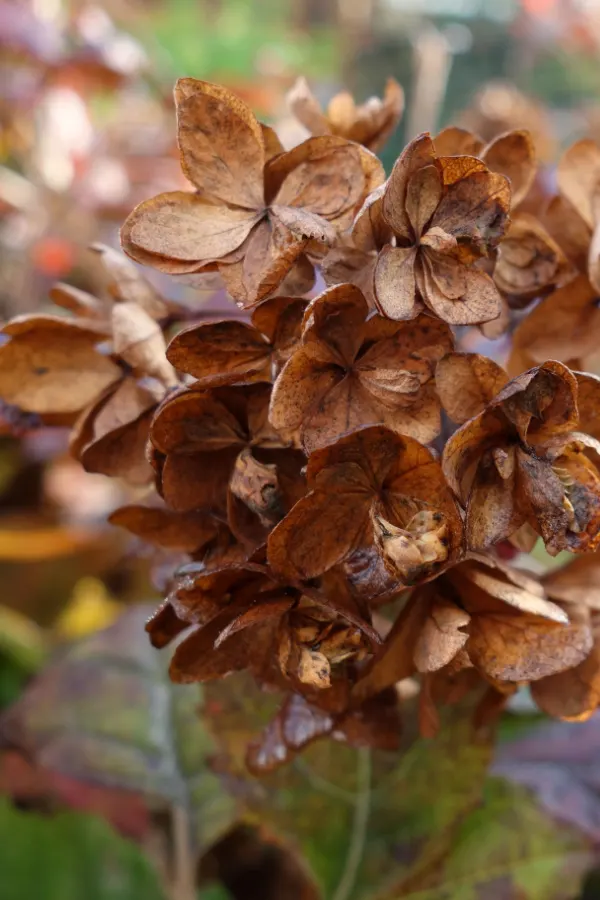Wondering what to do this fall with all of the old hydrangea blooms that are slowly dying off and drying on your bushes this fall?
Unlike the blooms of many other perennials, hydrangea blooms can be just as stunning when they are dying back as they are when they are in full, blooming color. Instead of losing their petals and falling from the bush, the blooms dry nearly in-tact.
The texture and detail can be nothing short of exquisite. In fact, so much so that many gardeners seek out their best blooms to snip from the plant to dry for flower arrangements, interior decorating and more.

But the question for most gardeners as winter approaches is what to do with all of those old blooms still on the plant. Can they be left on until spring? Should they be removed before winter arrives? And will cutting them off affect next year’s blooming cycle?
All of the above are excellent questions. And believe it or not, what you do and don’t do with those blooms before winter can affect your hydrangeas performance next year.
Dealing With Old Hydrangea Blooms In The Fall
To Deadhead Or Not To Deadhead
Let’s start by answering the biggest question of all. When it comes to old hydrangea blooms – is it harmful to allow the old blooms to remain through winter?
The short answer is no. Allowing the old blooms to slowly dry up and die and remain on the plants will not cause injury to the plants. Once the blooms have dried and the bush goes dormant, they pose no risk to the its health. Nor do they use any resources from the plant throughout the winter once they are completely dry.
Because of this, many gardeners prefer to allow the blooms to remain all winter long. After all, in a barren winter landscape, the long stemmed blooms certainly add interest. Especially when their dried petals become covered in frost, snow or ice.
But with that said there are a few reasons you may not want to leave those blooms up. Especially if you happen to have have hungry outdoor friends around during the winter. It’s not that the blooms will hurt them. But they can certainly damage your hydrangea bushes!

Two Reasons Not To Leave Old Hydrangea Blooms On In Late Fall & Winter
Although deer, squirrels and other animals don’t typically bother most varieties of hydrangeas, that always isn’t the case in areas that have more severe winters.
When heavy snows and inclement weather persists, it can make it hard for non-hibernating animals to find food sources. Not only have most of their fresh food sources dried up during the dormant months, heavy snows can cover other sources of ground food as well. And when they do – the upright blooms of hydrangeas can quickly become a target!
Unfortunately, a large majority of hydrangeas bloom on old wood. Old wood is the growth that occurs the prior year. And when hungry deer or squirrels begin to dine on the blooms, they often chew down and eat the branches as well. When they do, they also remove future blooms. By deadheading only the blooms in the fall – you can eliminate this risk.
Avoiding Fall Pruning
When removing blooms before winter, it’s vital to not prune any additional wood from your hydrangeas. Not even for small shaping. Not only can it remove next year’s blooms from summer blooming varieties that bloom on old wood, it can also cause issues for late summer and fall hydrangeas that bloom on new wood.
This is because any type of pruning beyond the removing of blooms can spur late, new growth. New growth late in the season is bad for two reasons. First, it causes the plant to use energy to grow. Energy that should be being saved and stored for next year’s foliage and blooms.

But that new growth is also very tender. And with winter right around the corner, that tender new growth is highly susceptible to freezing out over the winter.
Deadheading
When deadheading old blooms in late fall, be careful to only remove the bloom just below its stem – and nothing more. As you will see below, you can take a few of your blooms completely down for drying and decorating – but keep those to a minimum.
By only taking the blooms off, it keeps the plant continuing on its path to dormancy. That, of course, allows it to handle winter with ease. See: 6 Bushes To Avoid Pruning In The Fall.
Saving Old Hydrangea Blooms For Arrangements
So what about saving some of those beautiful old hydrangea bloom stems in the fall for flower arrangements and decorating inside?
There are actually several ways to save and dry hydrangea blooms. The easiest method by far is to cut the bloom and finish drying them off in a vase or container filled with a bit of water. To do this, you will need to cut a bit more of each stem you save than if just deadheading.
The good news is if you only take a few from each plant – it will affect blooming slightly for those that bloom on old wood.

How To Dry Blooms
It’s best to allow the bloom heads to mostly dry out on the bush first. Then, using a sharp pair of pruners, cut the stem off the bloom. Try to cut a length somewhere between 12 and 14 inches long. Next, remove the leaves and place in water. Place down in the container so that about 1/4th to 1/2 of the stems are in water.
Place in a cool area of your home out of direct sunlight. It may sound strange to put in water, but the water will allow the bloom heads to dry slowly. This, in turn, helps to preserve more of the blooms muted colors. It usually will take about two to three weeks for the flower to completely dry and be ready for use.
Here is to giving your hydrangeas and old blooms the best care possible this fall. And even better, to more blooms than ever next spring!
Simple Garden Life
Follow Our Facebook Page For Even More Great Tips! Simple Garden Life Facebook Page
Simple Garden Life is a website dedicated to keeping gardening fun, simple and enjoyable! We publish two new articles each week along with a new garden podcast episode every two weeks. This article may contain affiliate links.
